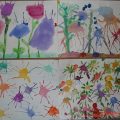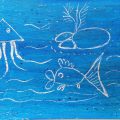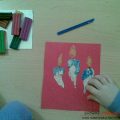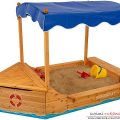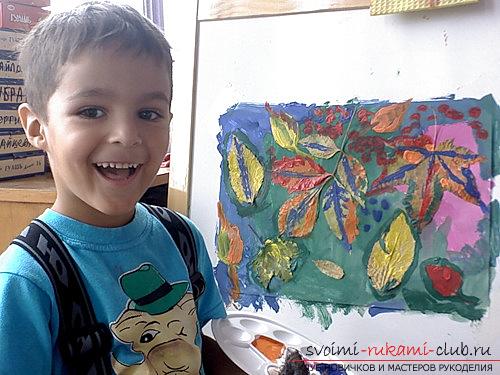
Teaching children to draw in the older group of kindergartens will help you to use non-traditional painting techniques
The techniques of non-traditional drawing used inthe older group of kindergarten, are one of the ways to teach children to draw, get acquainted with the painting, express themselves and their abilities. The variety of ways to convey your inner world and your vision of the environment, objects and objects familiar to the child allows him to fully reveal himself, without fear of doing something wrong, as well as gain new skills and knowledge. The teachers of the kindergarten have a difficult task - to introduce the children to the diversity of the outside world and to teach them how to transfer their feelings and emotions by means of paints and paper. One of the most effective ways is to use non-traditional drawing techniques. This method is given a lot of time and attention in preschool institutions. It is applicable for all age categories. The difference is only in the complexity of the techniques. Thus, in younger groups, children are offered to paint in the simplest ways, in the older group, the children go on to more complex options that require more skills and skills. Advantages of non-traditional drawing in older groups Not all children have unique ability to draw, and therefore, in order to teach the child to convey their feelings, feelings and perception of everything surrounding paints, pencils and paper, often the usual set for creativity is not enough. In such cases, non-traditional drawing techniques come to the rescue. Alternative methods have a number of important advantages:
- the child is liberated in the process of work, gets rid of fear that something will not work for him, gets confidence in himself and his actions;
- learns to correct mistakes made, transform the drawing, supplementing it with details;
- gets joy, positive emotions and a good mood, which does not leave him throughout the process of working on creating his own drawing;
- working capacity is not lost throughout the whole session, so children bring up assiduity and patience, which will be useful for them in later life;
- the child learns to think outside the box, fantasize, work with paints and improvised means.
A non-traditional approach to learning is oneof the important stages in the preparation of children of senior groups for school. Develops finger motility, personality, improves intellectual development, corrects mental state. All these qualities are necessary for children in the process of their growing up and becoming as a person. What unconventional techniques can be used for children in older groups At this age, children are already familiar with many simple techniques, so it's time to slightly complicate the task and consolidate the skills already acquired. The children are offered many ways of depicting objects and objects, among them:
- drawing with your hands - with the help of only your fingers and hands;
- kleksografiya;
- Spraying;
- drawing foam, sponge, wax and watercolors;
- dot drawing;
- various prints, as well as many other, no less entertaining options.
Let's consider some of the most basic andinteresting techniques of non-traditional drawing used in the older groups of preschool institutions. Drawing with hands This involves drawing with your fingers, hands, fist. Children use fingers instead of brushes, drawing different lines or drawing figures. Painted with a paint palm, you can apply different colors on your fingers, allows you to leave interesting prints on paper. In the future, they are given a certain form to the children, for example, they finish the head or legs, eyes, ears, fins, etc. In this way one can draw as the simplest flower or tree, as well as various animals, birds or fish. To make the image beautiful and bright, children need to perform various movements by hands, such as priming, clapping, smearing, and so on. 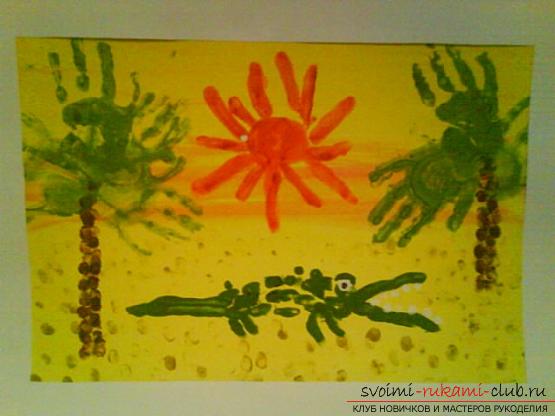 Drawing with the help of prints Very interestingan option for expressing one's creative potential is drawing with prints that can be made with anything: vegetables, cork, bottles bottles or interesting jars, coils from sewing threads and so on. To make seals, children are helped by adults, showing how to do it correctly. To work, you need a pad for printing, impregnated with different colors of gouache and paper. The seal is pressed against the cushion, and then its imprint is left on the prepared sheet of paper. Using this method, the child can create a wonderful drawing, any image, quite unusual and interesting.
Drawing with the help of prints Very interestingan option for expressing one's creative potential is drawing with prints that can be made with anything: vegetables, cork, bottles bottles or interesting jars, coils from sewing threads and so on. To make seals, children are helped by adults, showing how to do it correctly. To work, you need a pad for printing, impregnated with different colors of gouache and paper. The seal is pressed against the cushion, and then its imprint is left on the prepared sheet of paper. Using this method, the child can create a wonderful drawing, any image, quite unusual and interesting. 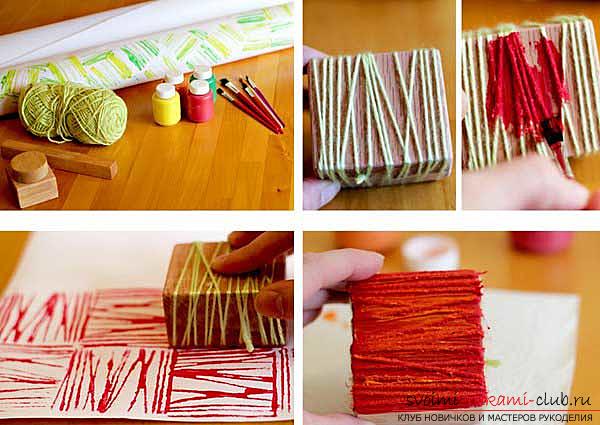 Kleksografiya The technique of kleksografiya very importantto activate the development of the imagination of children of this age group, the ability to make something out of nothing. The essence of drawing is that the child puts a blob with a brush, a plastic spoon, etc. on one half of the sheet (you can put several small blobs of different colors at once). After that, the paper is folded in half and turns around again. It turns out an unusual drawing. In the future, children, fantasizing, give it a recognizable look with the help of, for example, markers or pencils, finishing the details.
Kleksografiya The technique of kleksografiya very importantto activate the development of the imagination of children of this age group, the ability to make something out of nothing. The essence of drawing is that the child puts a blob with a brush, a plastic spoon, etc. on one half of the sheet (you can put several small blobs of different colors at once). After that, the paper is folded in half and turns around again. It turns out an unusual drawing. In the future, children, fantasizing, give it a recognizable look with the help of, for example, markers or pencils, finishing the details. 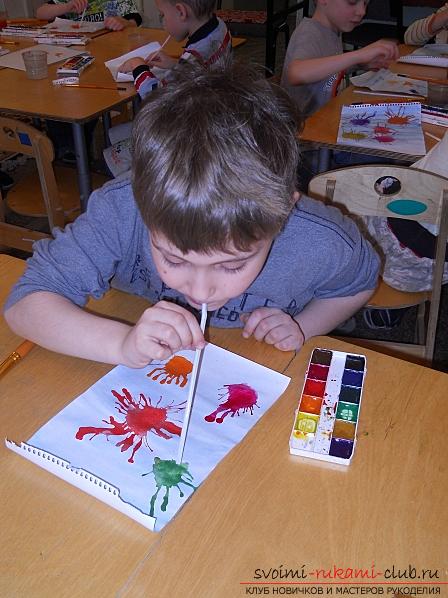 Spraying Spraying is very simpleand, at the same time, an exciting way that requires attention. To paint something in this way, educators in advance make different stencils, which the kids lay out on paper in the order that is provided by the theme of the created picture. Stencils depict everything from flowers and trees, to birds or animals, both domestic and wild. Next, you need to paint on the bristles of the most common toothbrush (an old brush can be found in every house). Take a ruler and run along the bristles (to yourself). Spray paints must completely fill all the free space of the sheet. The drawing is left until the paint has dried on it. Then the stencils need to be removed. In principle, the picture is already considered ready, but, if desired, the children will be able to draw on it some other elements, thereby improving their picture.
Spraying Spraying is very simpleand, at the same time, an exciting way that requires attention. To paint something in this way, educators in advance make different stencils, which the kids lay out on paper in the order that is provided by the theme of the created picture. Stencils depict everything from flowers and trees, to birds or animals, both domestic and wild. Next, you need to paint on the bristles of the most common toothbrush (an old brush can be found in every house). Take a ruler and run along the bristles (to yourself). Spray paints must completely fill all the free space of the sheet. The drawing is left until the paint has dried on it. Then the stencils need to be removed. In principle, the picture is already considered ready, but, if desired, the children will be able to draw on it some other elements, thereby improving their picture. 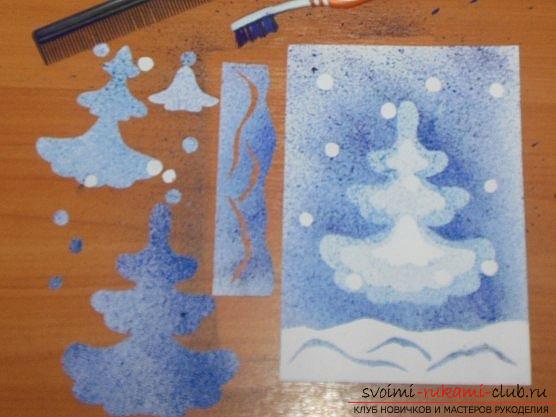 Collage Collage is the application of severaltechniques of unconventional drawing in one drawing, for example, the sun is drawn with fingers, the trees are imprinted, the bunny is poked with a hard brush, the lake in the technique of plasticine and so on. The process is very interesting and entertaining, allowing the child not only to fantasize, but also to consolidate previously acquired knowledge and skills.
Collage Collage is the application of severaltechniques of unconventional drawing in one drawing, for example, the sun is drawn with fingers, the trees are imprinted, the bunny is poked with a hard brush, the lake in the technique of plasticine and so on. The process is very interesting and entertaining, allowing the child not only to fantasize, but also to consolidate previously acquired knowledge and skills.  Each method of drawing is good in its own way. It enables almost all children to develop their creative abilities.
Each method of drawing is good in its own way. It enables almost all children to develop their creative abilities.
